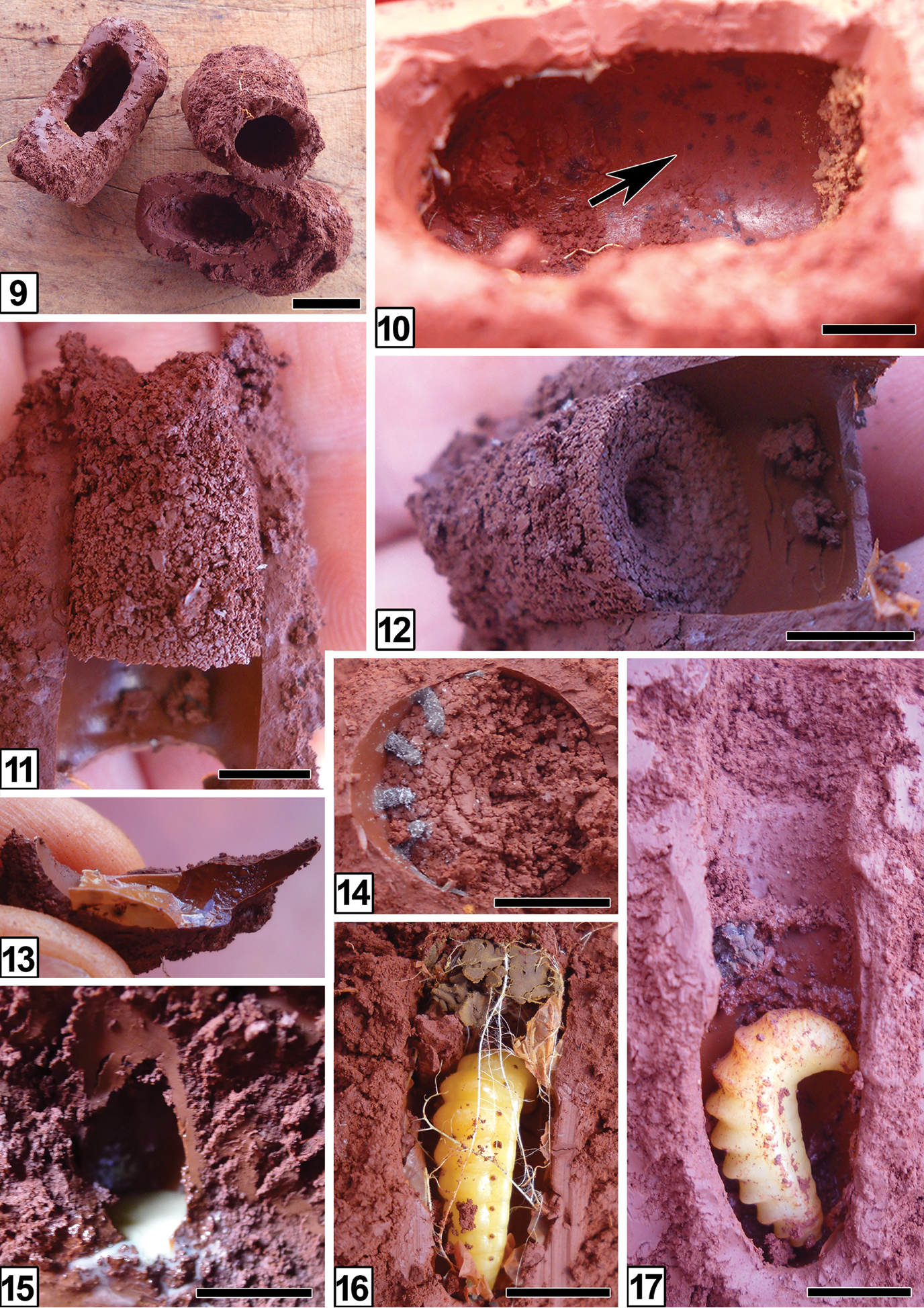
|
||
|
9 Three individual Oxaea austera cells removed from soil, scale: 1 cm 10 Black manganese mottles on the inner surface of the chamber (arrow), scale: 0.5 cm 11 Closed cell showing the antechamber filled with unconsolidated soil, scale: 0. 5 cm 12 Internal view of a closed cell showing the spiral closure, scale: 0.5 cm 13 Cellophane-like lining 14 Radial arrangement of fecal pellets in contact with the spiral closure, scale: 0.5 cm 15 Longitudinal section of a cell showing the semiliquid provisions, scale: 1 cm 16 Cell with a post-defecating larva, the mass of fecal pellets in the upper part and a mesh of rootlets originally developed between the lining and the soil wall, scale: 0.5 cm. 17 Post-defecating larva inside another cell showing remains of the antechamber, spiral closure and fecal pellets, scale: 0.5 cm. |